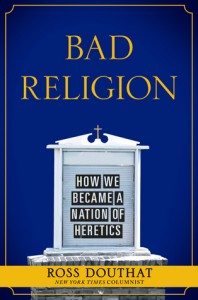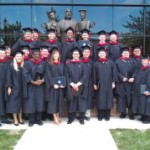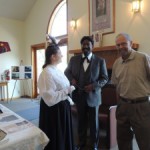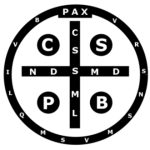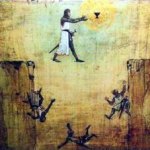After hearing the NPR interview “‘Heretics’: The Crisis Of American Christianity,”1 I decided to read Ross Douthat’s Bad Religion: How We Became a Nation of Heretics.2 I spent all summer on the library’s waiting list for this book, not getting my turn at a library copy until Thanksgiving.
Douthat believes that when religion is done well, secular society learns from Christianity and Christianity learns from society, citing the U.S. Civil Rights Movement and Vatican I as examples. He then cites five changes which occurred in the 1960s and 70s which brought about a shift in this mutual positive influence.
- Partisanship – The Civil Rights Movement transcended party politics, but Christians were divided on Vietnam. Furthermore, politicians saw that if they could define an issue as “Christian” or “moral” they had a ready-made base of support. Personally, I feel we still have not undone this error.
- The Sexual Revolution – Birth control made the orthodox stance of sex only for procreation obsolete, as sex for pleasure was now in play. In my opinion, Christianity has only recently unashamedly spoken of fulfilling sexuality as the gift of God when done within God’s guidelines has always been in play, so we have arrived very late to the ballgame.3
- A Global Worldview – The culture began embracing eastern ideas, and Christianity as a world-wide religion should have been ahead of the curve on this one. Instead of being so exclusively Western, we should have been learning and bringing to light in our context the theology and contexts of Latin, African, Eastern, and Asian Christianity. With the rise of the multi-ethnic church in America, I think we are again ahead of society on this point.
- Prosperity – The Hippies of the 60s became the Yuppies of the 80s. Dauthat believes these Boomers would fight against poverty, but not live in it, thus seminary enrollment declined. While the Roman Catholic Church still has a shortage of priests, I see many Protestant seminaries and universities transforming themselves for modern relevance without compromising orthodoxy, and young people pursuing ministry find them attractive.
- Class – Whereas in the past the intellectual elite were part of the Church, now they dismissed Christianity. I see the battle now waged on two fronts against Christian academics, who are sometimes attacked for their faith by secular institutions and for their commitment to science and academic rigor by Fundamentalists.
Bad Religion continues Douthat’s work as a conservative political and social commentator, not a theologian (which he never claims to be). He sees women’s ordination as a bridgehead of misguided inclusion and accommodation, but fails to see difference between the reconciliation of gender inequality versus accommodationist changes in Theology Proper, Christology, or Hamartiology. He sees the reconciliation of races with Martin Luther King, Jr. and the Civil Rights Movement as a golden age of orthodox Christianity coming to bare against societal norms, while largely ignoring the fact that for much of Christian history, including the generation before King, racial inequality, while not codified in creeds, was regularly taught in orthodox churches. Furthermore, when one considers the trajectory of Scripture, the role of women tracks more along ethic and class (slavery) towards reconciliation and equality, than with homosexuality and false teaching about the nature of God and Christ.4
Douthat’s conservative ideology becomes most evident in chapter four. While he sees the partisanship of the Christian Collation’s alignment with the Republican Party as an aspect of “bad religion,” he sees the formation of these ecumenical Christian groups, who purpose to influence the moral tide of the country, as good. He further shows his political leanings as he declares the period from Ronald Regan to George W. Bush the strongest period for Evangelicals. However, he measures Church strength in terms of social influence and political sway instead of the making of disciples, although he does regularly cite and compare trends in church membership across Christian groups.
In the second half of the book, Douthat spends a chapter each on the following theological accommodation/heresies he feels weakens Christianity, and thus the nation, and calls out by name the promoters of these teachings: 1) searching for the historical Jesus instead of embracing the orthodox Jesus in all his complexity, 2) preaching the prosperity gospel instead of the gospel of salvation, 3) seeing god in ourselves instead of God as god and the source of all good, and 4) promoting religious and political universalism instead of doing the work of missionaries. He concludes with a simple solution. We should all go back to church, confess, and spend time in prayer. I can’t argue with that.
Bad Religion was definately worth the read, but I am glad I chose to wait for a library copy instead of purchasing the hardback for myself; I do not know if I need this book in my personal library to reread. If I did keep a copy, it would be for the nice historical summary of key figures in the Social Gospel and Civil Rights Movements. Any person (but especially a pastor or historian) interested in modern Christianity, culture, and politics in the United states would probably enjoy this book.
References
- NPR Staff. (April 14, 2012). “‘Heretics’: The Crisis Of American Christianity.” Weekend Edition.
- Douthat, Ross. (2012). Bad Religion: How We Became a Nation of Heretics. New York: Free Press A Division of Simon & Schuster, Inc.
- For further discussion on this topic see The Techology Show Episode 183. (The “They Said It” segment begins at 27:13 and the specific comments begin at 42:22)
- Webb, William. (2001). Slaves, Women & Homosexuals: Exploring the Hermeneutics of Cultural Analysis
. Downers Grove, IL: InterVarsity Press.
©2012 Paul Tillman

